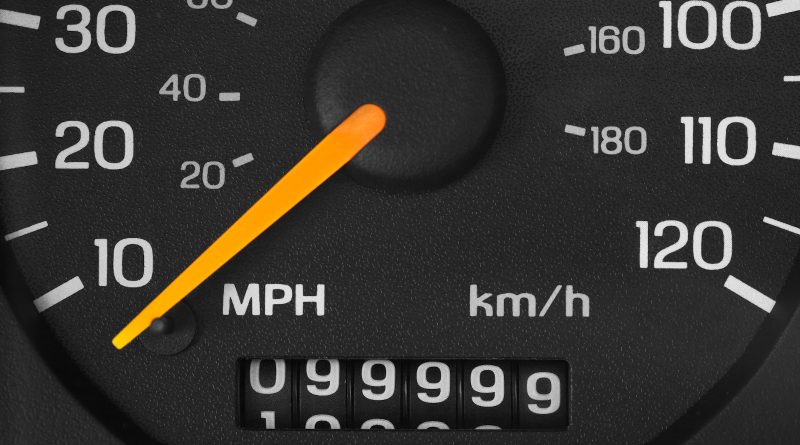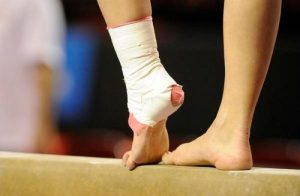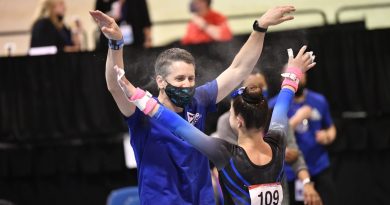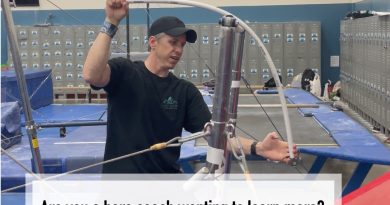How does an athlete’s mileage relate to a car’s mileage?!?!?
Many of you will ask that question right off the bat and to that I would say, “Everything!” A car accumulates miles as you drive down the road to work, vacation, grocery store, gymnastics practice, etc. Our bodies, similarly, accumulate “miles” when we walk, run, tumble, vault, punch, rebound. An athlete’s mileage becomes an important factor from a career’s longevity and success. You may have heard me discuss this concept on Shift Movement Science’s Podcast!
If I buy a new car with zero miles on it, I would feel very comfortable driving that car across the country multiple times without a care or worry in the world. The new construction of that car allows for a great security in it’s reliability. Without a manufacturing problem, the new car doesn’t often break down because of wear and tear.
 Once I have wracked up 200,000 miles on my car, I would feel less and less certain of making it to the grocery store and back, let alone a cross country expedition! But when I start to feel that way about my car, I can just buy a new car! And this replacement car will allow me to venture off around the country again.
Once I have wracked up 200,000 miles on my car, I would feel less and less certain of making it to the grocery store and back, let alone a cross country expedition! But when I start to feel that way about my car, I can just buy a new car! And this replacement car will allow me to venture off around the country again.
We cannot roll back an athlete’s mileage!
Unfortunately if we use this example with an athlete in our care, they cannot simply buy a new body. We cannot roll back the athlete’s mileage at any point. Once we create the overuse of joints and bones, there is no full reversal possible. This means that we must take special care in how we approach training from the outset of our development of each child. This could end up being the deciding factor in an athlete still competing her senior year in college at 21/22 years of age or retiring at 15/16/17 based on constant injury and inability to perform at a top level anymore.
How can we plan out the path to optimize numbers and avoid all of the extra mileage that might be unnecessary? It starts with prioritizing shaping, conditioning and flexibility within our programs. We must make sure that our gymnasts’ bodies are ready to withstand the forces acting on them while performing their skills on a daily basis (We call this Sharpening the Axe). A flexible muscle is a strong muscle so we must make sure to create pliability to stay healthy. Once we establish a quality physical foundation, we must pivot to the planning of our actual skill development. Lots of our planning comes down to how we can simplify skills for our athletes to learn the proper motor pathways that will ensure optimal efficiency as skills progress.
If you don’t have time to teach it right, when will you have time to teach it again!
If you do not teach something well, how many repetitions will be stacked on that body before the technique is finally reworked and corrected? Skills can be complicated and require many things being done correctly in sequence to create excellence. Therefore, we must break skills apart and work the details of separate sections to create confidence and competence on each position and/or section. We can slowly start to mold these drills together to create larger parts of the skill. Finally, when the athlete has mastered the smaller sections, we can put it all together to create the skill!
We may take a lot of preparation time and have a wonderful plan laid out. Every athlete will still learn at a different speed. Oftentimes, kids must stay on certain drills for longer than expected before they are ready to advance. Don’t be afraid to advance the kids that are competent and hold steady with the kids that need more time to develop.
A major mistake coaches often make is to rush some athletes to keep up with the fastest moving of the group.
This will almost always create a situation where the unprepared children will suffer from fear, lack of success and ultimately poor habit creation. Work to the level of each athlete. It may be harder, but for that child it will impact her future immensely.
Most importantly, remember that an athlete’s mileage cannot be reversed. There is no reset, no rollback and no do over for each athlete. We ultimately want to make sure that the athletes in our care are able to take their careers as far and as long as desired. They need enough left in their bodies to make that final “Road Trip!” Appreciate and respect that fact, and we will all be on the way towards our most responsible decision making possible.
Also read our Technical Ceiling Blog as a reference for creating a system of efficient learning and training.







